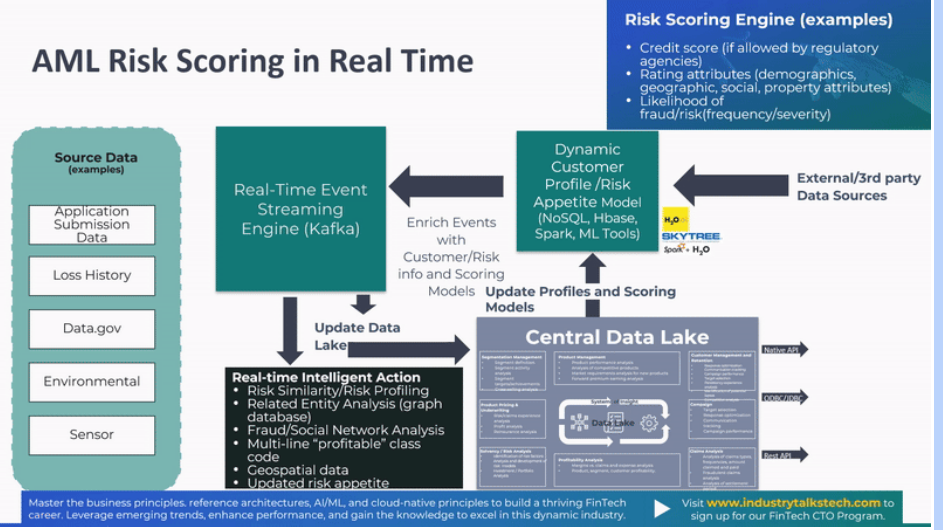
In today’s rapidly evolving financial landscape, anti-money laundering (AML) efforts have become increasingly crucial in combating financial crimes and ensuring the integrity of the global financial system. One key aspect of effective AML is the ability to accurately assess the risk profile of customers in real-time, enabling financial institutions to make informed decisions and mitigate potential threats.
At the heart of this real-time risk scoring for AML lies a robust data ecosystem, where various sources of information are seamlessly integrated to create a comprehensive customer profile. Let’s explore the key components of this data-driven approach:
Source Data:
- Applicant data: This includes the personal, financial, and transactional information provided by the customer during the onboarding process.
- Loss history: Historical data on fraud incidents, suspicious activity reports, and other financial crimes associated with the customer or their network.
- Environmental data: Information about the customer’s geographic location, industry, and other contextual factors that may influence their risk profile.
Data Integration and Centralization:
To harness the power of this diverse data, financial institutions often leverage data engineering solutions such as Apache Kafka and cloud-based data lakes. These technologies enable the seamless ingestion, storage, and processing of data from multiple sources, creating a centralized repository for analysis.
Real-time Analytics and Profiling:
The next step involves the use of advanced analytics and machine learning models to generate dynamic, real-time customer risk profiles. Solutions like AWS SageMaker, a fully managed machine learning service, can be leveraged to develop and deploy custom models that continuously assess the customer’s risk based on the integrated data.
Adaptive Risk Scoring:
The real-time risk scoring system should be designed to adapt to changing market conditions, regulatory requirements, and emerging financial crime trends. By incorporating feedback loops and continuous model refinement, the system can stay agile and responsive, ensuring that risk assessments remain accurate and up-to-date.
Actionable Insights and Decision Support:
The insights derived from the real-time risk scoring system should be seamlessly integrated into the financial institution’s decision-making processes. This could involve generating automated alerts for suspicious activity, triggering enhanced due diligence measures, or informing the allocation of resources for further investigation.
By implementing a comprehensive, data-driven approach to real-time risk scoring for AML, financial institutions can enhance their ability to identify and mitigate financial crimes, protect their customers, and maintain regulatory compliance. This holistic approach not only strengthens the institution’s AML capabilities but also contributes to the overall integrity and stability of the financial system.


